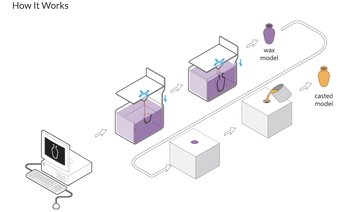Great Choices for the Best 3D Printer Now

Polylactic Acid (PLA) is a more eco-friendly material than ABS because it is biodegradable and of plant origin in a renewable way. It does not require a heated table for printing, let alone high temperatures for extrusion. As a result, it has a lower tendency to clog the extruder or get bent, which is conducive to printing large parts. But for all this, you will need to have the best 3d printer .
In addition, another advantage of PLA is that it does not emit a strong odor or harmful gases. Because they have a longer cooling time, printers optimized for working with this input have a directional fan to quickly cool the media and allow the next layer to print. PLA allows prints to have translucent, detailed color with greater fidelity, as well as brighter as and smoother than those made with ABS.
TPU – Flexible Filament l

Unlike most filaments that usually seek strength and stiffness, there are also TPU filaments that are more flexible. Its purpose is to offer malleability and flexibility, ideal for joints, seals and parts that require general movement. Check the shore hardness specification of the material for its degree of malleability. In the case of TPU Ultimaker, the shore is 95A.
Soluble Filament – PVA
Using a 3D printer with two extruders, the soluble filament is used to create supports for the main material. They are easily removable by dissolving in water, bringing greater efficiency in making detailed parts that could be compromised with original media holders.
Detachable Filament – Breakaway
Breakaway is also used for media printing on a 3D printer with two extruders. It is an easy material to remove and does not require post-processing. Because of these properties, it maintains a quality finish on the part.
Engineering Filaments
In addition to the aforementioned inputs, there is now a greater and growing variety of filament types available for advanced use 3D printers. Materials already known to the industry are now possible for 3D printers such as PP polypropylene, PC polycarbonate, Nylon and CPE copolyester. These filaments have specific properties and can be used in some cases for end applications, not just prototypes.
What is the best filament for your project?
As we know, each filament has its unique characteristics and properties. To know which material is best for your printing, you need to consider the application of the part, the equipment it will have available and the operator’s level of knowledge.
In general, we find that PLA is suitable for most visual-only projects and is ideal for novice operators. With a higher print success rate, although it varies with user experience, PLA tends to get the expected result more easily. In addition, it is supported by almost every FDM or FFF machine on the market today and has a wide selection of colors.
The ABS filaments are ideal for printing objects that will be used several times, exposed to force and high temperatures. To be successful with an impression made of ABS, recommendations for extrusion and table temperature should be considered, and a slightly more advanced degree from the operator is recommended. In addition, the printing environment must be ventilated so that the emitted gases do not harm the health of the machine operator.
